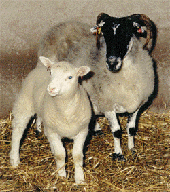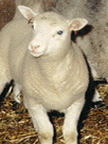DOLLY ART PROJECT HISTORY
The
Dolly Project grew out of my involvement with computing and cyber
culture which begin in the
mid-eighties. I taught my first courses in digital imaging and
made my first digital art in 1985. I became interested in both
the conceptual ideas of computing and the physical tools--the hardware.
The power of computers to create new images and also to modify
and manipulate existing ones is now very old news, but it was a
radical departure from traditional image-making in 1985.
My
first body of work, The
Architecture and Memory Series, consisted of digitally processed photographs, as well as critical
writing and presentations. On the one hand, it seemed that computers, due
to their capacity to record and store vast quantities of information,
could enhance, extend, and stabilize human memory. On the other hand,
it became clear that the opposite might also be true. As we came
to increasingly use and rely on computers, the issues of information-overload,
depersonalization, memory crashes, etc., tempered blind enthusiasm
for technology. The second project I worked on through the mid-nineties resulted in several variations
of performance and installation. Titled Mnemosyne's
Dream, it was a
further exploration of memory. It also looked at relationships between
the tangible world of nature, things, and bodies and the cerebral
world of computing.
In
the mid-nineties, after the coming of broad access to the Internet,
email, and then the World Wide Web, questions of identity overtook
those of memory in my work. It was not only information and images
(also sounds)
that could be easily modified with computers, but also our own identities.
We could choose to "be" different individuals in the online
world and we also saw the graying of the borders between human and
machine as technology penetrated the body. Pacemakers and mechanical
prosthetics, for example, made cyborgs out of individuals who most
likely were not aware of the larger implications of these medical advances.
Artists, scientists, and of course science fiction writers, knowingly
transgressed the borders between biological and mechanical as they
investigated the future of cybernetics and biology.
Humans
and other animals were not only changed by mechanical and electronic devices,
but they also were increasingly the objects of genetic manipulation. Origin
and identity were suddenly terribly vulnerable. Dolly, the cloned sheep,
was unprecedented, because she was cloned with cells from an adult animal.
When the news of Dolly hit the press in 1997, my attention--like that
of much of the world--was snagged. I knew that I wanted to make art in
response to Dolly. |
HI-TECH
VS. THE IDYLLIC
It's
relevant to report that I grew up on a farm and that I
moved back to the country, living in rural Vermont from 1974-84.
I had a handful of sheep for a few years and came to know first-hand
their behaviors, stereotypes, and association with the pastoral.
Beyond this brief shepherding encounter, I also admit to being enamored
of idyllic landscapes speckled with flocks of sheep. Therefore, when
I began making art about a particular sheep named Dolly, I decided to
juxtapose this hi-tech specimen with the humble creature that has played
a role in human culture for about ten thousand years. The irony
of this rustic animal becoming the emblem of futuristic biology made
Dolly an excellent subject for examining the promises and the problems
of cloning.

Dolly & surrogate mom
Dolly
was an ordinary looking sheep. She had no outward signs of
her parthogenetic, or virgin birth. Nor would you know by touching her
wooly fleece that she was the one live outcome of 277 laboratory trials.
A central piece of my Dolly Project, 277
to 1: The Cloning of Dolly, is a "diagram" of the experiment carried out at the Roslin
Institute in Scotland: it lays bare a key aspect of cloning for all
to see. It consists of 276 images of a plastic sheep that have been
digitized, "artificially
colored," and
slashed with hand-painted black "Xes" to indicate their
non-survival. In
contrast to these 276 unframed images is a triumphant portrait
of Dolly in an ornamented gold frame.
The second
large work in the Project, While
Shepherds Watched..., is a tapestry-like wall hanging
that also speaks to the unsettling issues of cloning. In this case, ethical,
religious, agricultural, environmental, and genomic diversity issues make
their way to the surface.
Additional works in this project include "portraits"
of sheep done as monoprints, color photographic prints, quilt-like mixed
media pieces, and a series called "sheep clothing" which are assembled and
stitched from paper, wool yarn and other materials. |



